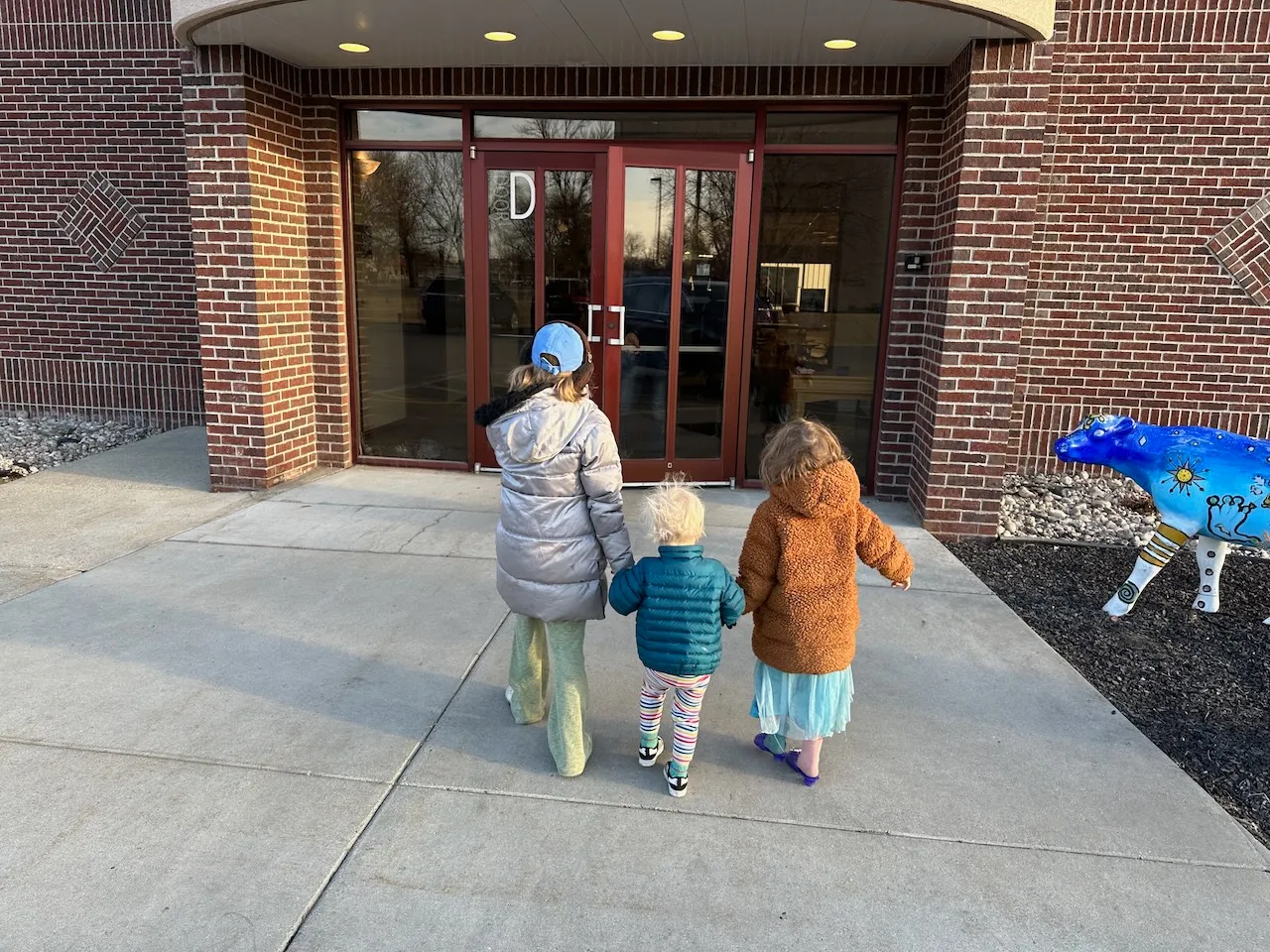Intern to Earn (I2E) - Using Digital Lessons to Change Local Communities
Intern to Earn (I2E) engages workers with micro-tasks that provide income, experience, and credentials while building a valuable network.

Table of Contents
The road to a professional career is often paved by internships.
The old model was students and young professionals intern for a company to get their foot in the door, with the hope to be hired and begin their career. These internships acted as an important anchor for a community, retaining and training students for the local workforce.
This model now feels slow and out of touch with new models of work brought about by technology and the COVID pandemic. As web3 shows, it is now possible to engage workers in a more decentralized way with micro-tasks that provide income, experience, and credentials while building a valuable network.
It’s time to create a model of Intern to Earn (I2E).
A successful I2E model would:
- Atomize the internship experience into paid micro-tasks
- Combine micro-tasks into broader experience in key skills and industries
- Provide credentials recognizing skills gained and tasks completed
- Connect students with local employers and the community
- Enable employers to build a more robust talent pipeline
The “Great Resignation” is a concern for businesses who now face competition for talent from remote businesses across the world. For local communities to compete, an Intern to Earn model is needed.
The Power of the Intern
Internships are a power economic tool for students and communities.
In many ways, internships solve higher education’s problem of relevancy. By combining an academic course of study with a practical experience, students are better prepared to enter the workforce. Plus, internships provide the network to get that first job.
For communities, internships provide a connection point. Many university towns face the “gown and town” separation, where students spend two or four years on campus and never leave. Internships bridge that divide by getting students off campus and into the community. This exposure to employers, community amenities, and new relationships are key factors in retaining talent. When students like where they live and have professional opportunities, they’re more likely to stay.
My own community of Fargo-Moorhead undertook a study to recently to measure the impact of “connectiveness.” According to the Campus FM report by Ecotone:
- Post-graduation wages are $8,240 higher on average for students who have had an internship
- Employers save $3,370 per student thanks to reduced labor costs (interns are cheaper!) and avoiding onboarding and training for new hires
- Being more connected to a community also increases the likelihood students will graduate while providing mental and physical health benefits
- $1 invested =’s $7.95 return: For every $1 invested in connecting students to the community through internships, mentorships, volunteering, and service-learning provides a social return of $7.95

This data points to the fact that internships and related experiences are highly impactful. Unfortunately, the current model is antiquated and limits the potential reach of internships. As placemaking studio Folkways is exploring, new models are needed.
The Problem with Internships
With clear data on the power of internships, there should be a focus on making it easy for as many students as possible to participate and parlay that experience into future opportunities. Unfortunately there are two major problems: access and impact.
The current model has numerous elements that limit access for students and inhibits the impact students receive after the internship. These problems need to be fixed:
Starts Late - Internships are often emphasized as an end of college experience to prepare for a career. This is too late and excludes students who leave school early. Internship experiences should start early to enable everyone to participate and to give students as many experiences as possible throughout their studies.
Requires Previous Knowledge - Many internships require a level of mastery in a subject area. This again limits accessibility to specific students at a specific stage in their educational journey. Students should be provided optional training they could complete ahead of an internship if specific knowledge is required.
Overly Demanding - Internships are typically crafted as a major experience, requiring a semester or summer. Students go through a long, competitive interview process and can get stuck without an opportunity if they are not chosen. Lowering the length of internship experiences and the onboarding process will expand internship access.
High Risk for Employer - Employers likewise face risks from a long, demanding internship process. They can only choose a specific number of interns and are “stuck” with them the entire length of the internship, even if they’re not a good fit. That means employers might miss out on talent and are forced to “find work” for the interns to keep them busy. It reminds me of my days as an intern in Washington, D.C. where, twice a week, my job in the afternoon was to squat on the Mall to guarantee our softball team had a field. 😎
Financially Restrictive - Many internships are unpaid or low paid. While employers tout the experience and network as benefits for the intern, the lack of financial support limits participation to those with economic means.
Relationally Restrictive - Many internships are not well advertised and are word-of-mouth experiences. If you are recommended by the right person, you’ll get the position. This is discriminatory against those without a network. This is especially acute for students from out-of-town and students who do not have parents or friends working in industries they are interested in.
Digitally Second - Many internships moved online during COVID, but they are not digital first. Internships might be done in-person, but communication, onboarding, and other tasks should be moved online. This would enable the in-person time to be used more effectively. Similarly, connecting interns with opportunities and even compensating them could be better done online.
Lack of Certification - Students learn important skills in internships, but these are not well documented. Often an internship is just a bullet on a resume. Students are incentivized to pick internships with well-known companies because the brand becomes the certification. Even if the internship is not as beneficial or interesting, it may be chosen based on reputation (not unlike choosing a college). Internships should lead to a marketable credential that increases opportunity.
Intern to Earn (I2E)
An Intern to Earn model takes the lessons from web3 and applies them to in-person and remote internships. At a basic level, I2E:
- Rewards students for completing micro-tasks
- These tasks unlock expertise
- This expertise leads to credentials
- All along the way, students are connected with the community and employers, creating more opportunities for full-term work
This model has been developed and perfected online with bounties. Companies and DAOs offer a “bounty” for a task - anything from design an icon to share a tweet to design a website. Members can claim the bounty and get paid when the task is complete. Upon completion, the member earns status, can be reviewed, and can unlock more difficult and higher paid bounties.
The bounty system is very similar to platforms like Fiverr or UpWork. Honestly, it is not conceptually different than a job placement agency. The big difference now, however, is that payments can be made immediately and on a micro-scale. The ability to atomize tasks lowers risk for employers and workers. It also enables workers to start immediately. With many tasks being online, a student could see a task, sign up, complete it, and get paid, all while sitting at the coffee shop.
Many platforms are now working to unlock this talent. They approach this model in different ways. For example, the Shiny Object Social Club uses DeWork to post tasks and build a Kanban board of tasks to be fulfilled.
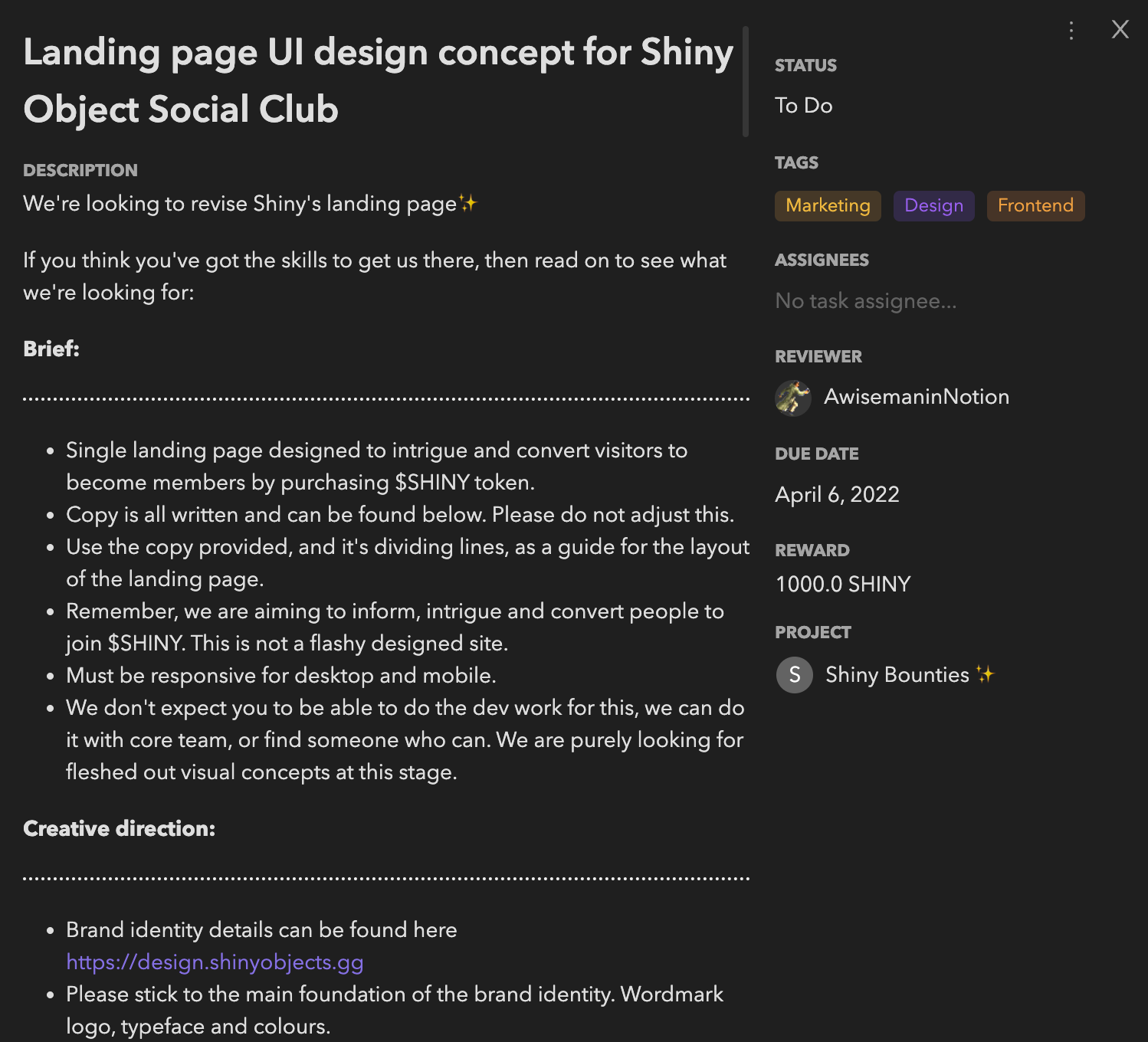
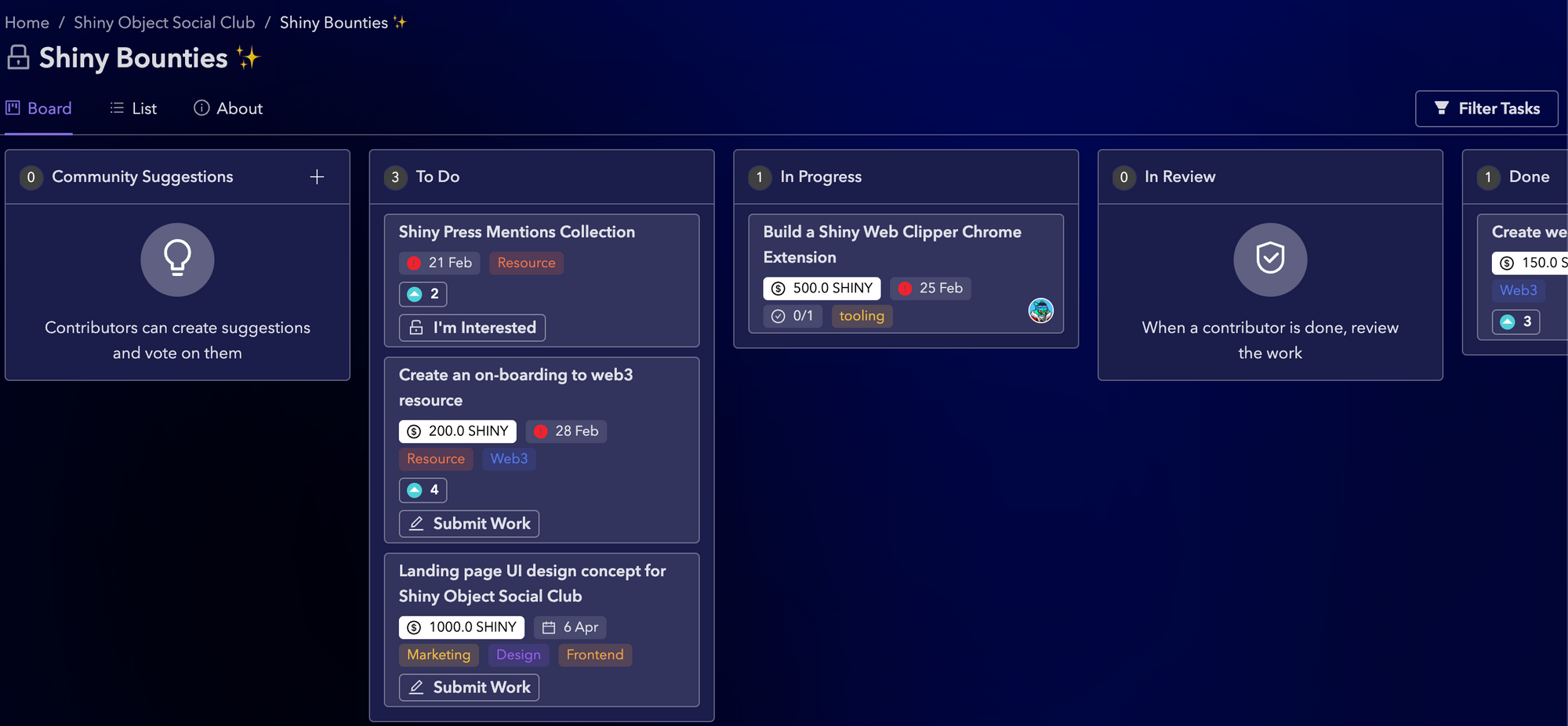
Braintrust has developed an entire ecosystem of connecting talent with companies using a talent-owned model where talent gets paid and earns greater ownership in Braintrust.
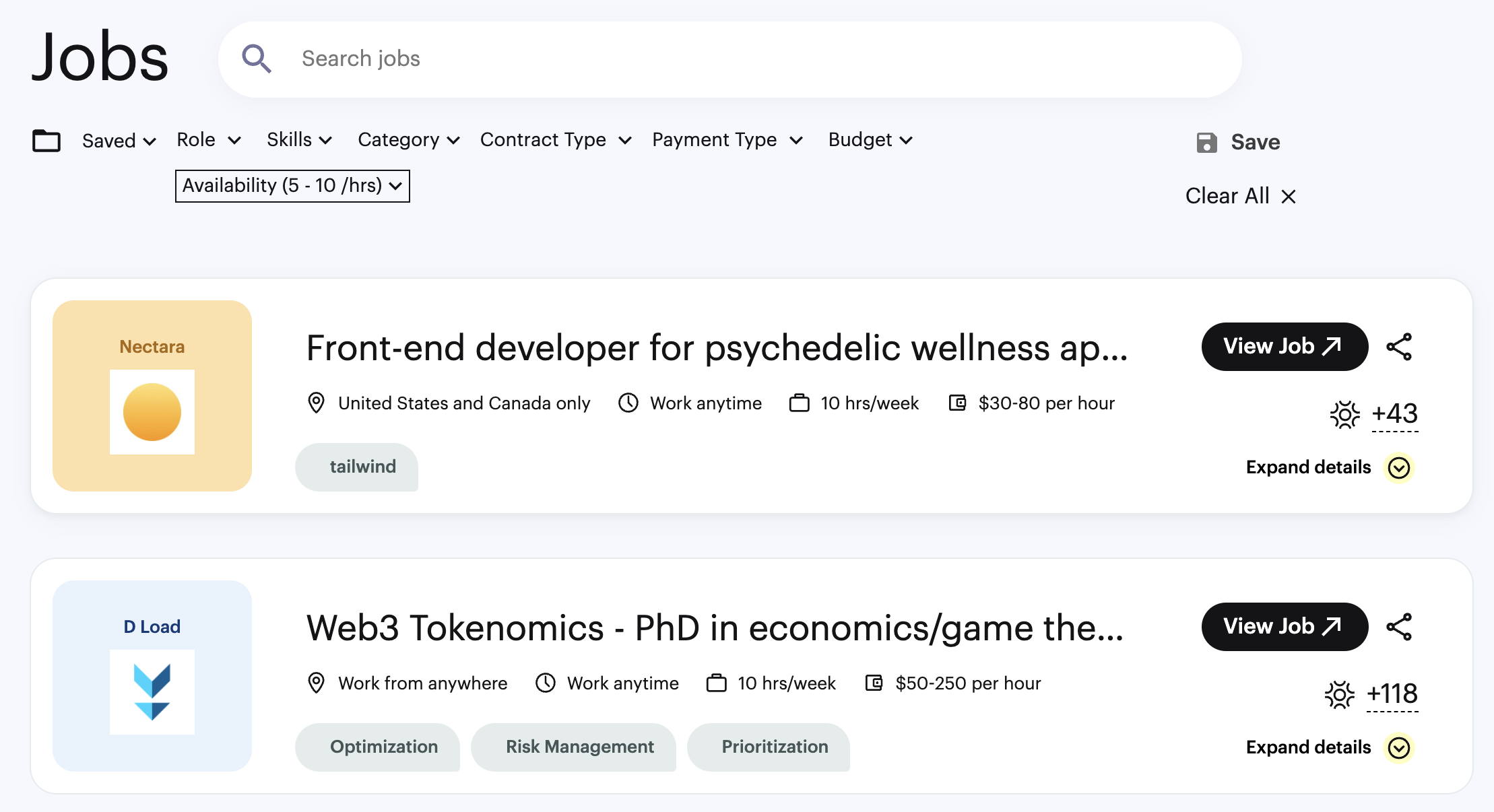
Station provides topic-focused opportunities so individuals can express interest and suggest projects within a topic area. CCS uses this to connect members with new ways to contribute.
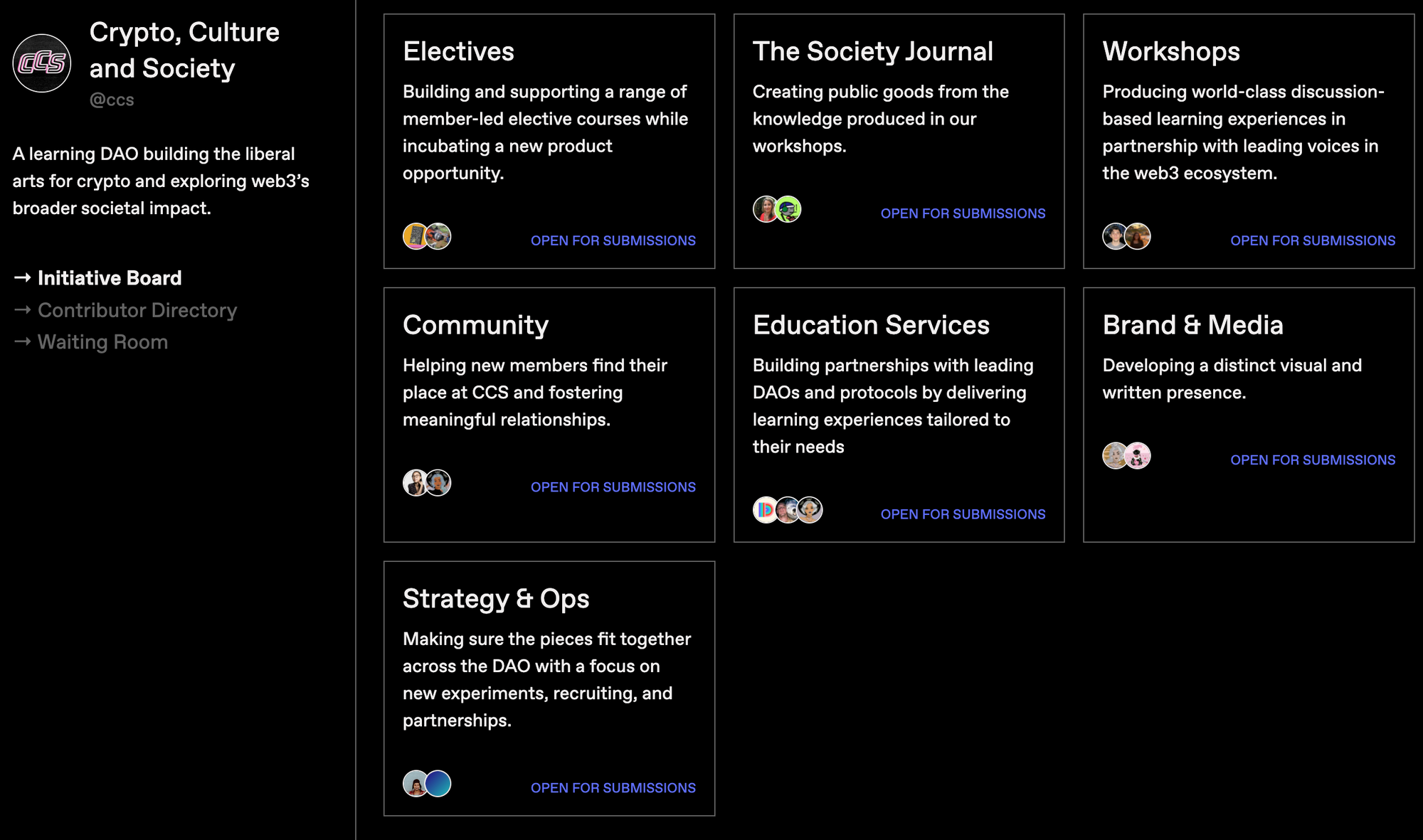
The I2E Blueprint
There are seven steps that would launch a successful I2E model in a community.
1. Build Demand
Jobs are the first piece of the model. The demand side of the talent marketplace will be harder to fill. Starting with an industry focus would help recruit the initial employers. As an example, non-profits in a community could all be approached and invited to join.
The industry focus results in tasks that are similar to one another, for example creating a social media content calendar or helping with a fundraising flyer. With tasks that are similar to one another, it will be easier to organize and easier for students to complete.
As these businesses and organizations have success, more will want to join, filling the demand side of the I2E marketplace.
2. Post tasks
Technology shouldn’t get in the way. The I2E marketplace could start with something as simple as an Airtable spreadsheet. However, numerous tools like DeWork, Station, Clarity, and others could be used to quickly launch. Key features when posting tasks would be highlighting payment, categorizing based on skill level (easy, advanced, etc.) and skill type (marketing, admin, etc.) for easy searching
3. Create Onboarding
The goal of I2E is quickly getting students started. Onboarding should thus be commensurate with the tasks. To start using the platform, students should only be forced to do basic onboarding: learning about the platform, creating a profile, adding account for payment, adding a W9 in the United States.
Then, as students complete more tasks, they can complete additional onboarding tasks as needed. A tool like Teachable, Disco, or Notion would make it easy to post training and track completion. If working with marketplace tools in number 2, students who finish onboarding could receive a credential, such as an NFT. This NFT would unlock access to additional tasks.
4. Create Credential Model
Before launching, outlining outcomes for the participants will increase retention and conversion from micro-tasks to long-term contributions. Completing a specific number of tasks at varied levels within a track should lead to a certification of mastery.
For example, a student who provided marketing support at easy, medium, and hard levels would receive a certification or NFT to recognize their work. This becomes their ticket to opportunity as other businesses would start to recognize this as validated proof of their qualifications.
5. Build Payment Model
The I2E model could be done with low tech, such as Venmo and a spreadsheet. More advanced would be building this model using web3 tools so students would be paid in cryptocurrency and rewarded with tokens that unlock additional opportunities.
Most community organizations would opt for the former. However, an I2E marketplace would be a powerful incentive to onboard students to web3 and prepare them for the future of work in a meaningful and tangible way.
6. Attract the Students
Knowing the current problems in the internship model highlights opportunities for building the I2E model. Those typically left behind by internships - younger students, those who don’t have time for a longer commitment, those exploring what they want to do - are perfect users for this model.
Starting with an industry focus and transparent payment for tasks will help users quickly find opportunities that interest them. While tasks can help students get engaged with the community by helping in-person, having a number of remote micro-tasks will be important to help students find and immediately use the platform.
7. Measure the Results
The I2E model is built for iteration.
With small tasks and a large variety of opportunities, employers can quickly learn what works best while students can find their talents and interests. Anyone managing the marketplace can similarly optimize and improve, finding industries and tasks that are most enticing for their student body.
Unlock the Power in Your Community
Lessons from the digital world can transform our communities. The idea of building in public - merely starting and publicly sharing what you’ve learned and built - is a cornerstone idea of the builder space online. This is a powerful mindset to give our students that could start with their internship experiences.
By atomizing and democratizing internships, we can better prepare students for the workforce and unlock talent in our communities. This talent might otherwise leave or be engaged with work online. It is up to local businesses and organizations to reach out on the students’ terms, to engage student talent the way they work in a digital-first world.
Internships should no longer be just a foot in the door. Internships should be a way to explore, earn, and connect.
If we can move closer to that outcome, everyone benefits.
This article was originally published on the Ed3 Mirror blog.
Scott David Meyer Newsletter
Join the newsletter to receive the latest updates in your inbox.



